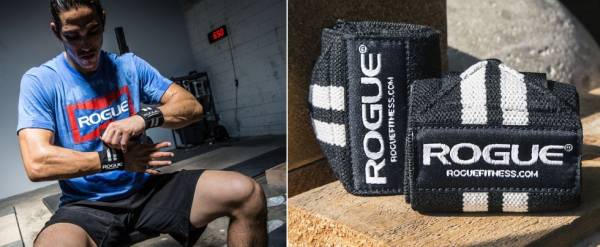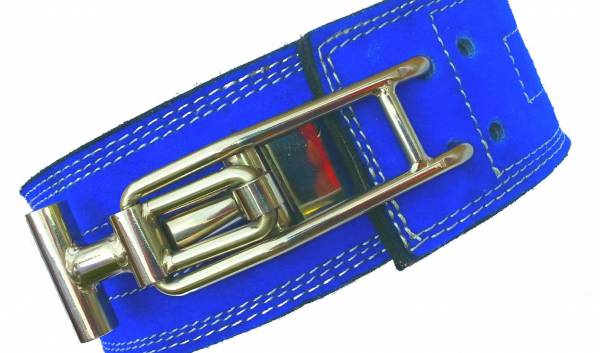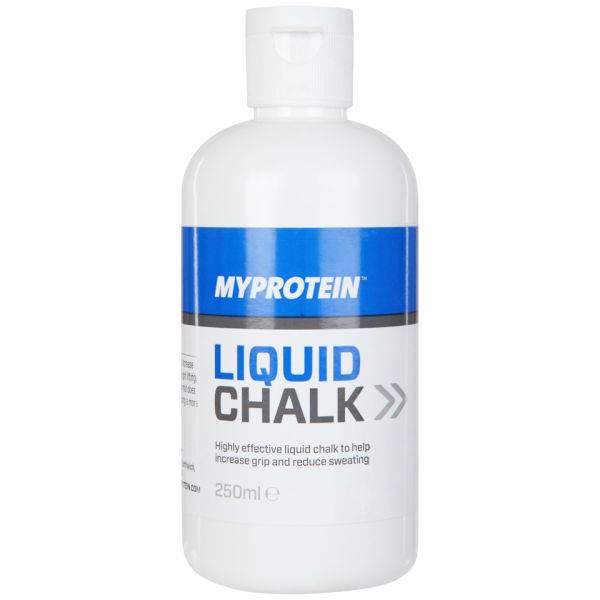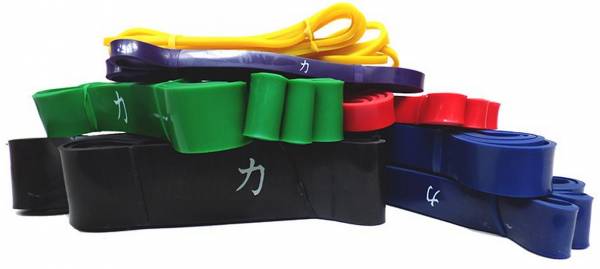Tight singlets, baseball caps, and long CrossFit socks. These items will not do much for your training, but there are some pieces of kit that will genuinely get you closer to your true training potential, as well as help you avoid injury.
How do I know? Because I rifled through the gym bags of two of the UK’s leading strength coaches – Barrie-Jon Mulder, head strength and conditioning coach at The Athlete Centre, and Pieter Vodden, a certified Gym Jones instructor – in a bid to find out what they use and get their athletes to use during challenging sessions.
Wrist Wraps
Ever tried doing super heavy thrusters or front squats bare wristed? As well as leaving you with joints that feel like you’ve borrowed them from your granddad, training without wraps limits what you can lift because of the extra stability and mobility they give you.
Barrie-Jon Mulder said:
Keeping joints happy is essential if you’ve got a heavy barbell-based training schedule that puts your joints under pressure. The extra protection and mobility wraps offer means you’ll be able to keep using your joints from one session to the next, which will allow you to keep increasing the weight you’re working with.
Pieter Vodden added advice on how to use the wraps:
You don’t need them for your warm-up lifts. But when you’re tucking into working sets, they’re solid wingmen. Just make sure you don’t wrap them too tight or you’ll cut off the circulation to your hands. If you can’t feel what’s going on as you lift, you won’t be able to control the bar as well.
Try Rogue’s white series wraps, which are made from a cotton, elastic, and polyester blend that absorbs excess moisture to stop bar slippage and skin irritation. They come in three sizes, with the 12” and 18” ones offering ample support and mobility for Olympic lifting, and longer 24” ones being better suited to powerlifting and strongman training. They’re available at Rogue Europe and cost from €18.60-26.04.

Rogue’s White Series Wraps
If you’re after something a little less CrossFitty, go for Gasp’s Hardcore Wrist Wraps. They’re 13”, are made of cotton (80%) and rubber (20%) so they’re comfortable and durable. They have fetching orange elastic lines so your thrusters draw the eye, and they give your wrists enough freedom of movement to not hinder your lifting. These are available for £17.00 from Urban Gym Wear.
Belt
“Weightlifting belts can provide stability and protection for your lower back when you’re going heavy with movements such as the squat and deadlift,” said Mulder. “But it’s important to know when to use them.”
Vodden offered a similar warning:
Don’t be that guy that belts up for a 40kg deadlift. If you rely on them as a default, you won’t develop much in the way of core strength. But as you pile serious plate-age onto the bar, [belts] definitely make you feel safer and more confident. Not fearing you’re about to put your back out is a big plus when you want to go heavy.
Barrie-Jon Mulder explained:
By increasing the pressure in your abdomen you stabilise the area and reduce spine loading. Just bear in mind that before you start using them you need to have the proper lifting techniques mastered. If you don’t know how to breathe properly during, say, a heavy squat you’ll never reach your true strength potential.
For those in the market for a solid belt, the Detonator Lever Royal L ticks all the boxes. It’s made of super-tough 10mm leather and comes with a quick-release stainless steel buckle that can handle obscene levels of pressure, so it won’t snap halfway through that triple-bodyweight squat attempt. It costs £67.99 from Zulu Glove.

Zulu Glove’s Detonator Belt
If the above is a bit beyond your means, Myprotein does a durable double-buckled leather belt for a meagre £21.24. And you can adjust the size of the belt with a flathead screwdriver, so you can share it with your other half or a mate of a different build.
Chalk
Pieter Vodden advised:
You don’t need it when you’re working with lighter weights but as you go heavy, you don’t want a faltering grip to be the thing that stops you from achieving a new PB. As well as physically giving you better purchase on the bar, the confidence chalk gives you that you’re not about to come undone by sweaty palms will leave less room for doubt that you can’t complete a lift.
Barrie-Jon Mulder provided some useful suggestions on bringing chalk to the gym
Just don’t turn up to the gym with pockets full of loose chalk that you end up emptying all over your gym’s kit as you try apply it. A good strength and conditioning centre will have containers of it you can you use. Or you can bring it in a bag with drawer strings, or tupperware box, so you can seal it after application. Even less messy is liquid chalk, a fluid you squeeze out of a bottle onto your hands and then wait a few seconds for it to dry.
You can buy liquid chalk at Myprotein. They’ll give you 250ml for £6.59. As well as boosting your grip, it doesn’t stain your clothes, and there’s no chance of inhaling any mid-lift. This means you don’t end up coughing chalky phlegm all over your training partner.

My Protein’s Liquid Chalk
If you want to keep the cost of mighty grip strength to an absolute minimum, you can pick up a twelve-pack of Crayola anti-dust white chalk on Amazon for a paltry £1.66. Just remember to keep a couple of sticks to write down next week’s workouts on the blackboard.
Resistance Bands
A surprising number of gyms don’t have these. And it’s normally because they don’t understand how valuable these pieces of kit are, or they do, but every time they buy a bunch they go walkies. They’re so important that if your gym is lacking in the band department, you need to bring your own. “There are few better training tools to properly mobilise your body before a workout,” said Mulder.
“The further you get down the road the more you realise the importance of mobility in improving your lifts,” said Vodden. “It means you’ll get injured less and will be able to get into the meat of your workout faster.”
Barrie-Jon Mulder offered other uses for resistance bands:
And they’re not only good for warming up or down. “They’re an excellent tool for assistance work (lower weight moves that target specific body parts you want to strengthen for bigger compound lifts). You can also use them to offer resistance during every stage of a move so your muscles are forced to work the entire time it takes to complete a rep. Resistance bands are a superb bit of kit take away with you on holiday if you have no gym access – there’s almost no limit to the number of moves you can do with them.
You can buy a huge range of resistance bands. Bear in mind that the thicker the bands get, the more resistance they offer so don’t buy a super thick one if you’re looking to do super-fast high-rep circuits.

Strength Shop’s Premium Resistance Bands
Alternatively, Strength Shop will knock you out a complete range of premium latex resistance bands for for £139.99. You get six different thicknesses, so you can use them for everything from wrist mobility work to supporting your full weight when you’re trying to learn muscle ups.
Summary
The bottom line? If you’ve hit a plateau, the above training tools can instantly help you push on. And there’s no need to fear that you’re cheating in some way. Nothing here will reduce the amount of weight you’re personally responsible for lifting. What each of these items will do, though, is ensure you maintain the most efficient, injury-preventing form possible so you can apply all of your strength to every single rep.
Check out these related articles:
Photo 1 courtesy of Shutterstock.
Photo 2 courtesy of Rogue Europe.
Photo 3 courtesy of Zulu Glove.
Photo 4 courtesy of My Protein.
Photo 5 courtesy of Strength Shop.






